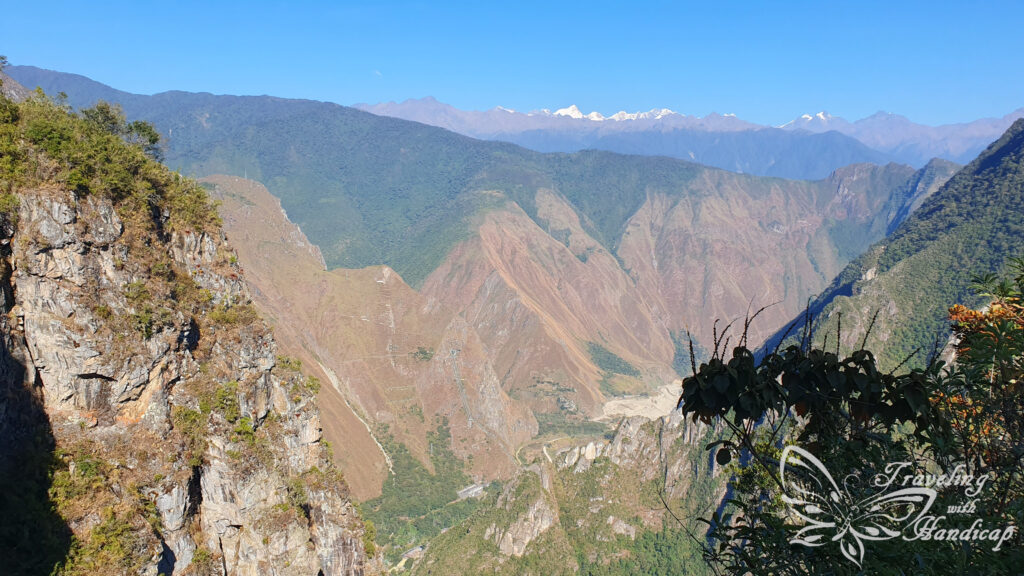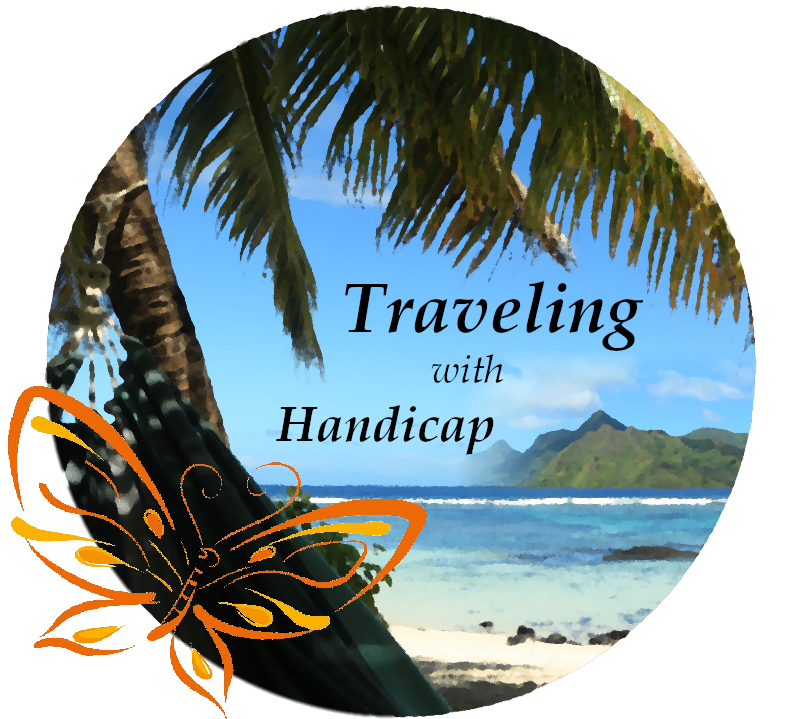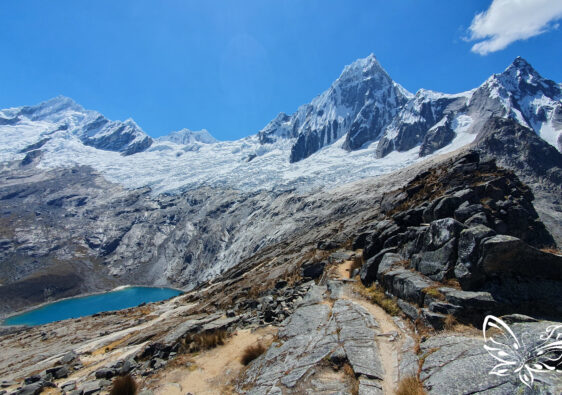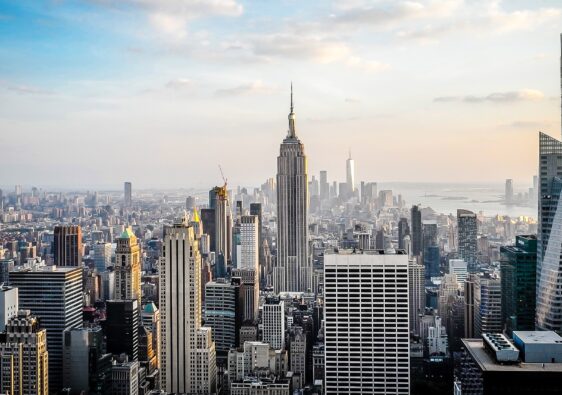Enjoy the journey and try to get better every day. And don’t lose the passion and the love for what you do.
Nadia Comaneci
How to get to Machu Picchu – from Cusco
If you want to visit Machu Picchu, there are different ways to get there. Of course, the most simple – but also the most expensive – is to take the train from Cusco to Aguas Calientes. This town also calls itself the Machu Picchu town. From Aguas Calientes you may either walk all the way uphill to Machu Picchu or take a bus. Otherwise, you may take a bus or collectivo to the Hidroelectrica train station (approx 6hrs ride from Cusco) and then walk along the railways for 10 km to Aguas Calientes or take one of the few connecting trains.
You might also do a tour of the Sacred Valley and stay at Ollantaytambo (not go back to Cusco). There is the first train station after Cusco and there are actually more connections between this town and Aguas Calientes than with Cusco. Therefore, you might take a train in the late afternoon and visit Machu Picchu in the morning of the next day.
The more adventurous people hike. There is the famous Inka trail which allows a limited number of people per day. As such, it is often booked out, so it might not be possible. As I have heard, tours might have a certain capacity blocked, but not for cheap. On the Inka trail, you will finish just in Machu Picchu. Otherwise, if you want to hike another track towards Machu Picchu within great landscapes, go for the Salkantay Trek as I did. Just keep in mind that both tracks cover high altitudes, so you should spend some days in Cusco before, to acclimatize.

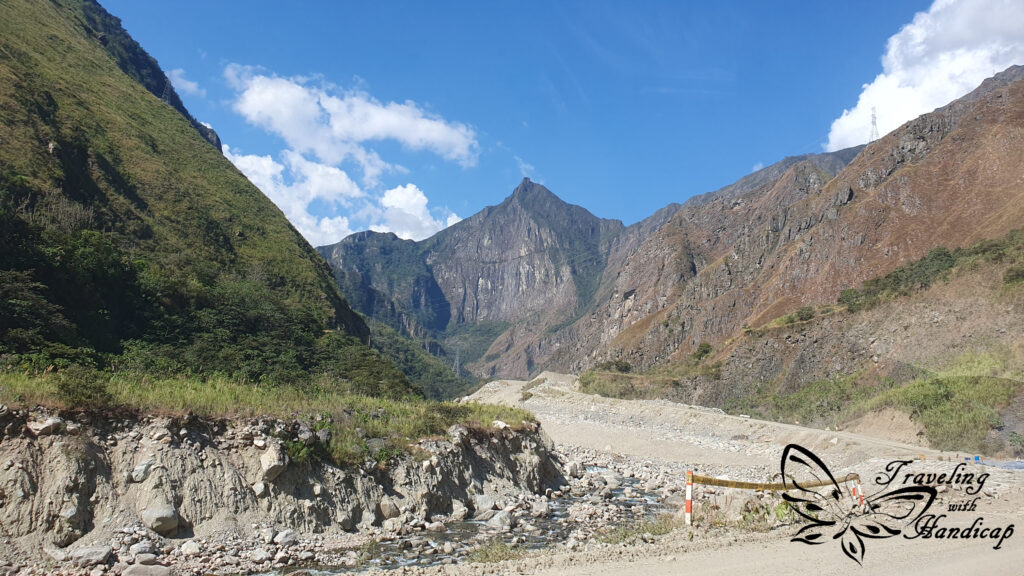
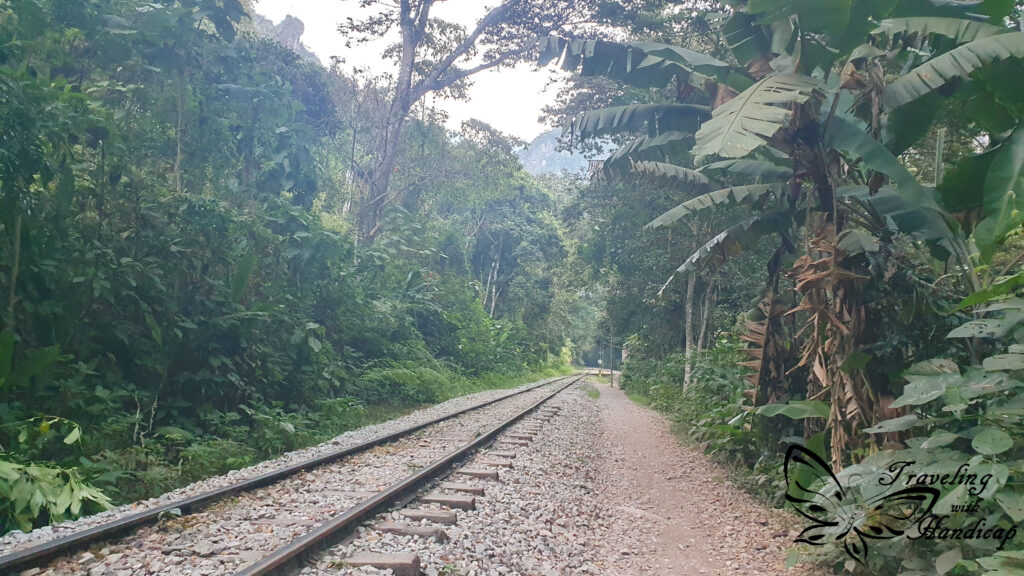
The Salkantay Trek
Basics about the trek
Officially, the Salkantay Trek starts in Mollepata. However, if you book a tour, you will skip the first part and start in Callacancha. On the first day, you walk from Callacancha towards Soraypampa. From there, you hike up to and back from the Humantay Lake. This lake doesn’t exist for too long already. It has been a glacier once, not having any water. But due to climate change, the lake created itself from the ice of the mountains. On the hike to the Humantay Lake, you can practice for the high altitude (4600 m) on the second day when crossing the Salkantay pass.
You have to cross the pass, there is no option of camping on the top. Well, wild camping is possible, but it’s very windy and cold at night at 4600 m. Moreover, the ground is rocky, without any space to properly build up and fix a tent. You have to go downhill for a while, until you reach Wayraqmachai. This is a loose accumulation of a few houses and spaces to camp and the first place to set up your tent. After leaving this town, there will be some villages as well as camp spots along the track. Thus, after Wayraqmachai, you are more flexible in terms of where to stay. Tours have their dedicated stops, though.

How to get to the Trek
Since I didn’t want to do the Salkantay trek with a group and guide, I had to figure out a different way of transportation. There are collectivos from Cusco to Mollepata and maybe also one or the other from Mollepata towards Soraypampa or to Callacancha. I didn’t want to take collectivos in the early morning because it’s difficult to plan the day if you don’t have fixed departure times.
The best option I found was paying for the transport of a 1-day Humantay Lake tour but not going back to Cusco. Since the parking close to Soraypampa is more than 3 hours away from Cusco, tours usually start with their pick-ups by 4 am. With this option though I knew my arrival time, and so I could plan my first day. With this option, I honestly cheated a bit, since I didn’t do the part of Mollepata to Soraypampa including the part from Callacancha to Soraypampa which the tours also do.
The Trek
Many tour operators offer the Salkantay trek as a tour. However, I don’t like going with tours since I want to walk in my own pace. I want to take breaks whenever and for how long I want to. Since I walk slower than the average hiker, I would constantly feel rushed within a group which is no fun. Thus, it’s a lot better experience for me to hike on my own. Tour operators would say “we don’t recommend walking alone”. Nevertheless, it’s not difficult. The track is very visible, you cannot get lost. I had my GPS prepared but didn’t need it even one time.
In general, the track is not difficult, there is no climbing included. However, the altitude is the factor causing it to be tiring or hard. Thus, I recommend doing the trek alone only if you have already done some hike to above 4500 m. I have some experience with 5000 m already and know how to handle it well, so I wasn’t worried. Moreover, the tours use horses to transport your stuff, you will only walk with a day pack. This is much easier than hiking up to 4600 m with your backpack including camping stuff, for sure.
The tours typically do the trek within 4 days/ 3 nights. I didn’t plan any fixed number of days (and as such didn’t prebook the entrance for Machu Picchu). In the end, I walked it in 5 days, could have done it in 4 days considering my last two days though. My stops were very different from the tours’ stops, on purpose. This way, I was almost alone on the track which was great.
Day 1: Cusco → Mollepata → Soraypampa ↔ Humantay Lake (4.5 km)
At 4am I was picked up from my hostel in Cusco. As it was that early, I tried to sleep on the bus. However, this was difficult due to the “excellent” quality of Peruvian roads. In Mollepata we had a stop to have breakfast. After that, we were brought to the parking area close to Soraypampa. From there, we started the walk to the Humantay Lake. I was happy I skipped the part starting in Mollepata as it would follow the road we took – many curves and not nice to walk.

I brought my backpack with camping gear (tent, mat, sleeping bag), one set of cloths to change and two meals to prepare for the first and second dinner. From the third day onwards, there were enough huts and villages to buy food from. Like this, I was able to reduce the amount of weight since food is considerably heavy compared to the rest. Since the walk to the Humantay Lake was a return hike, I stored my backpack in a little shop in Soraypampa and only walked up with a tiny bag having my camera, water, and snacks.
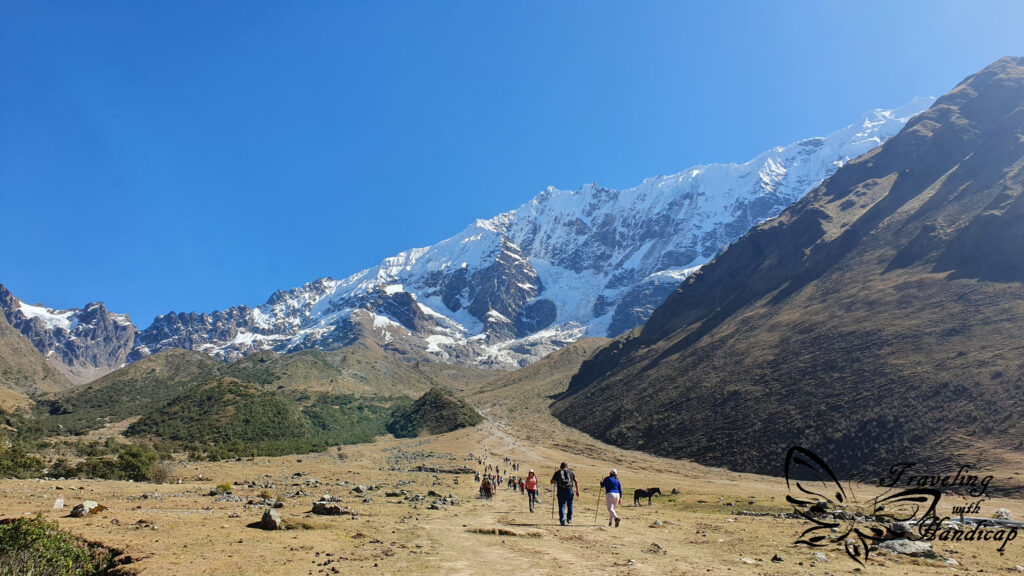
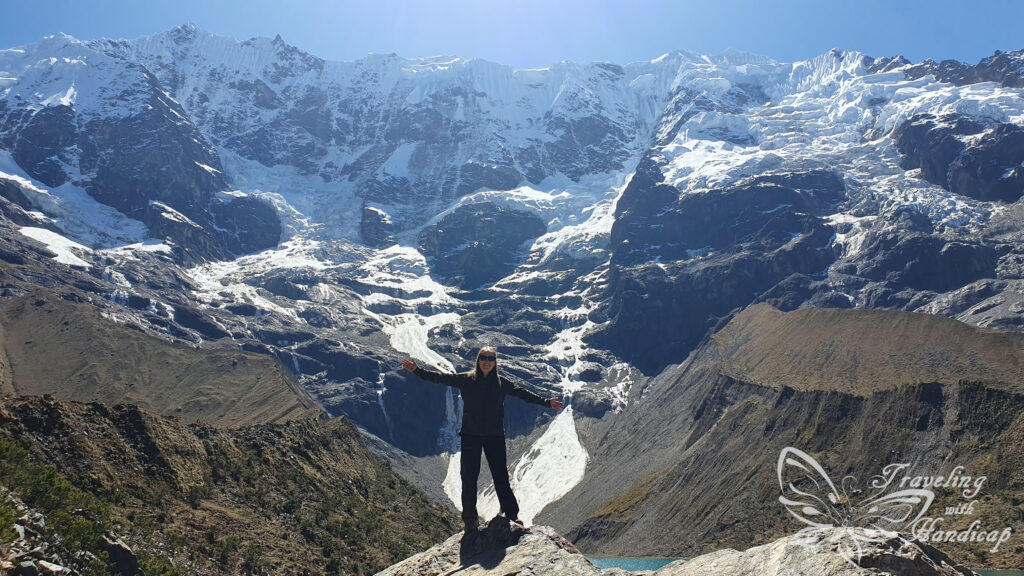
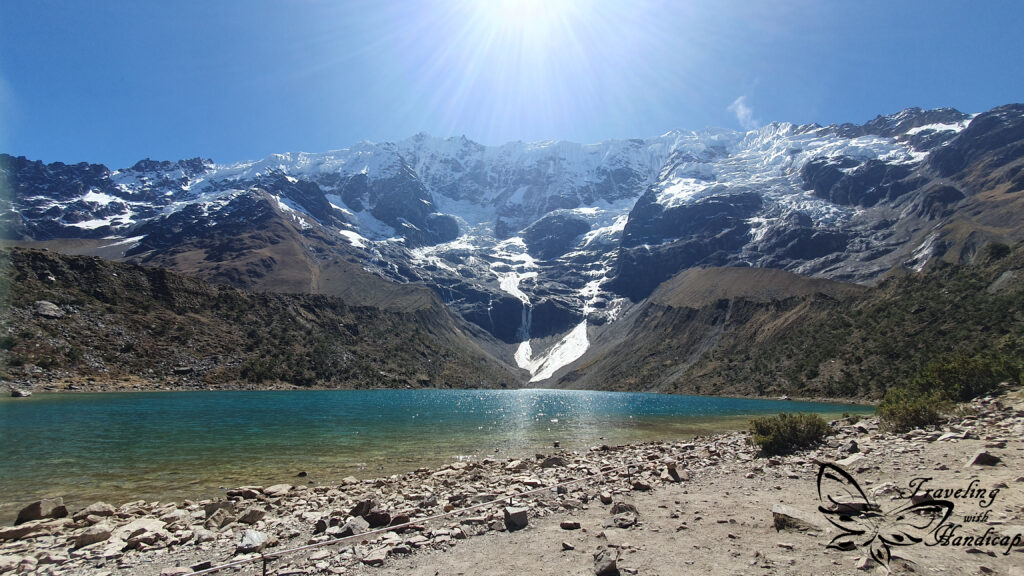
The Humantay Lake is considerably new. It has been only a glacier for a very long time, but due to climate change, the ice keeps melting and causes the lake to exist. It was a nice view, for sure. However, considering the reason for its existence lowered my enthusiasm a fair bit. Nevertheless, I took some great photos up there and prepared myself for the altitude the next day.

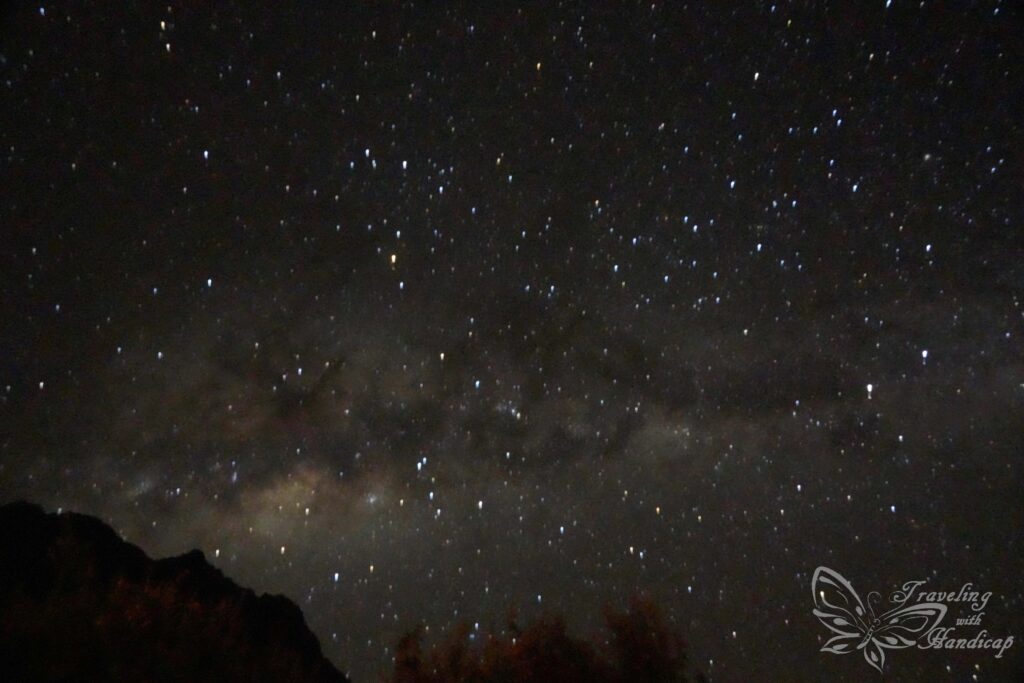
Day 2: Soraypampa → Salkantaypampa → Abra Salkantay → Wayraqmachai (10 km)
This day was the hardest for me as well as the most impressive. I camped in Soraypampa, got up and left approximately 1 hr after all the tours. I took a short break in Salkantaypampa before heading all the way up north to the Abra Salkantay. In Salkantaypampa, I talked to the family selling drinks and snacks (last chance before Wayraqmachai), they live here during winter time (dry season) because of the tourists.
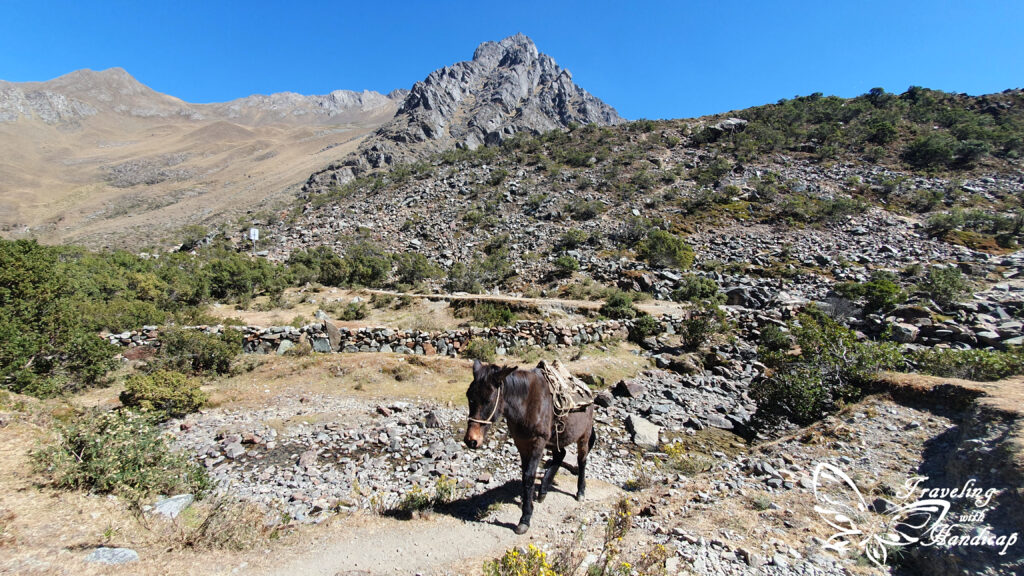
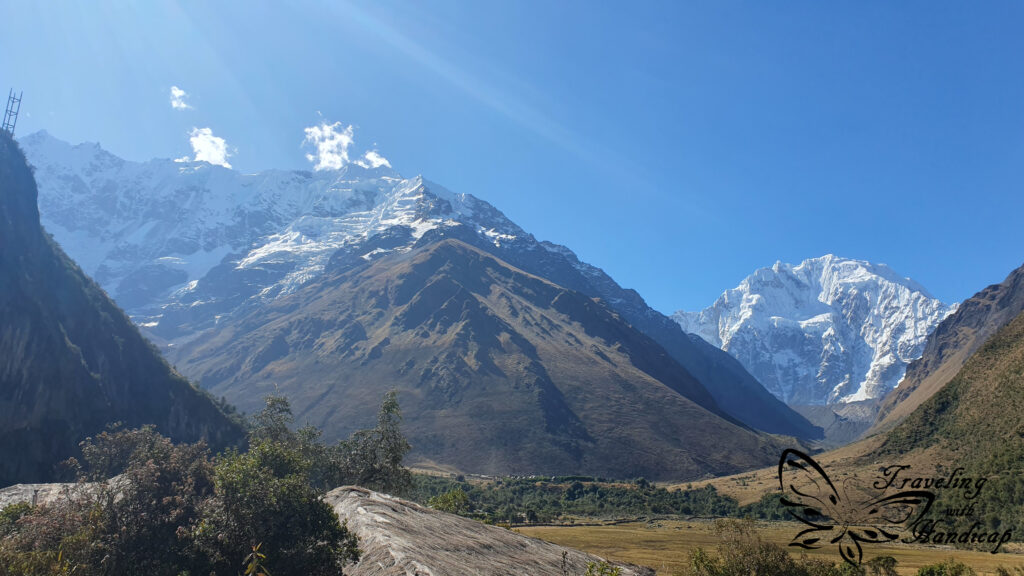

If you walk slowly – literally slowly – the pass uphill from Salkantaypampa to Abra Salkantay is no problem. I heard that many guides rush people uphill and then back downhill. This is not healthy at all as I learned in Bolivia. I spent more than half an hour on the top (Abra Salkantay) enjoying and indulging the view without any other people crossing (also no horses). Quite impressive. Since there were no other people, I don’t have any photos of myself up there. 😀
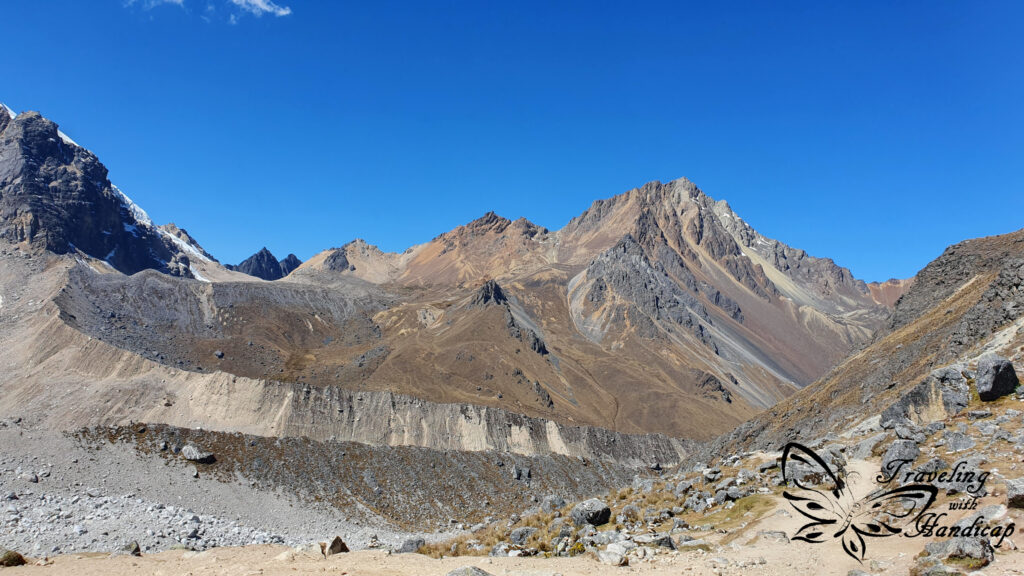
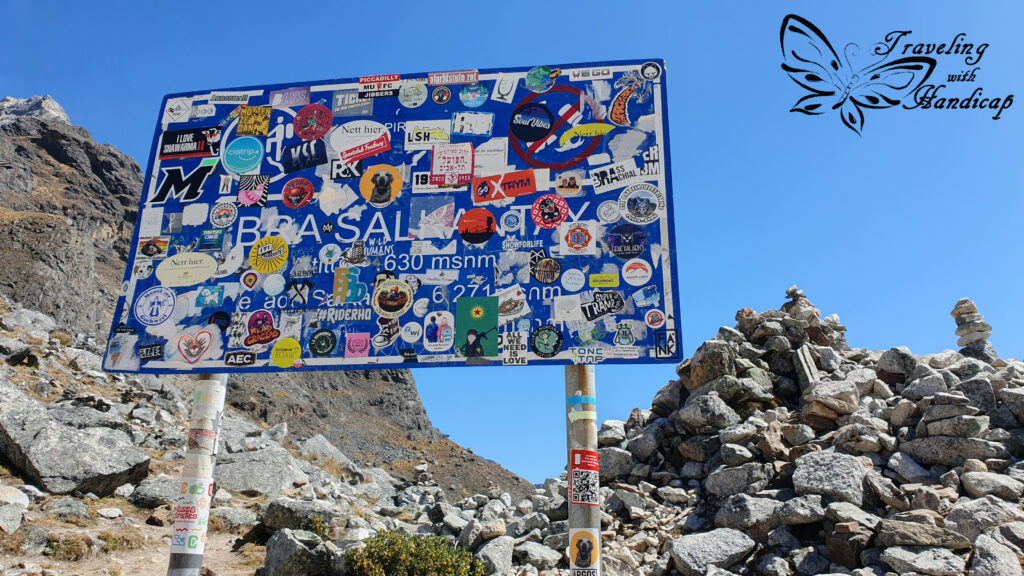
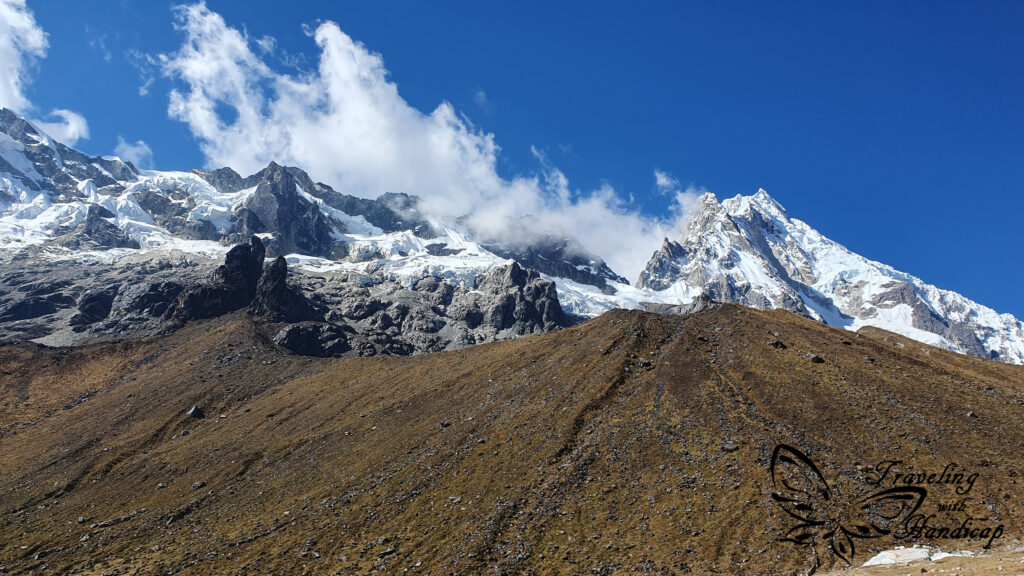
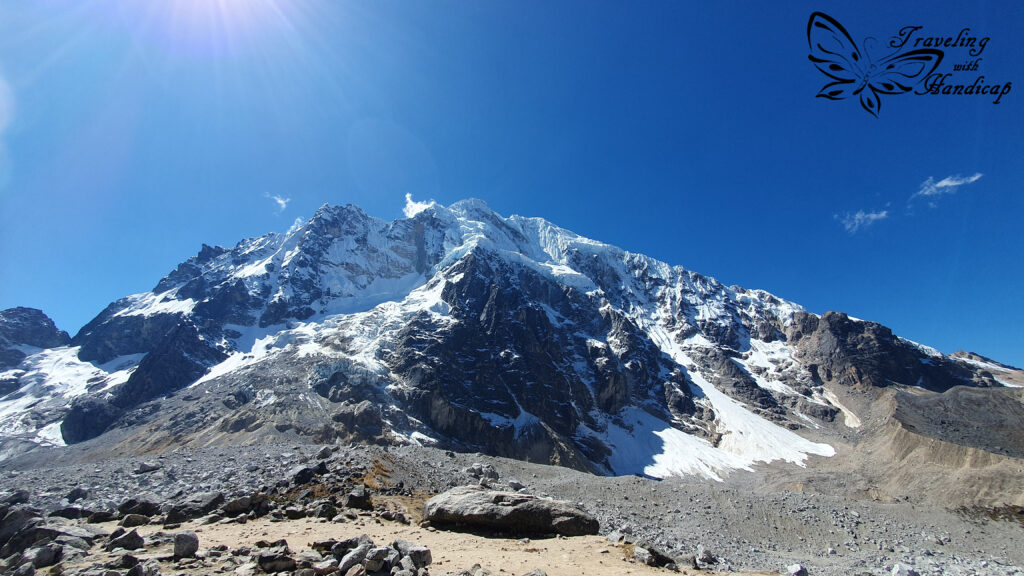
The walk towards Wayraqmachai was quite tough for me as I don’t like all this loose gravel. So I took my time. Some guys with horses transporting goods (material) passed, all asked me if I was tired. I wasn’t, I just didn’t want to walk any faster, because of the gravel and the views. However, somehow the locals don’t really seem to understand why someone enjoys walking slowly as they all rush.
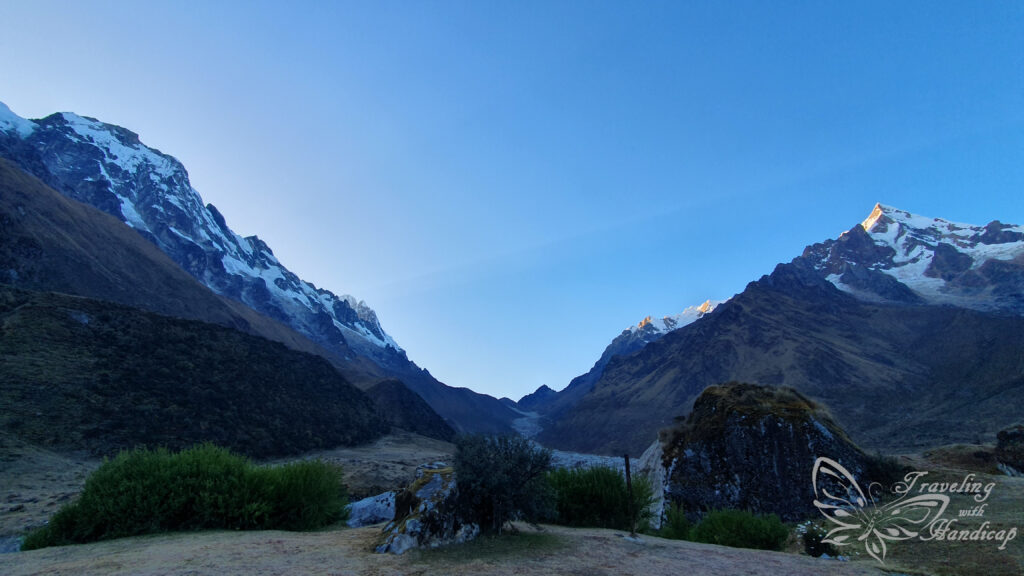
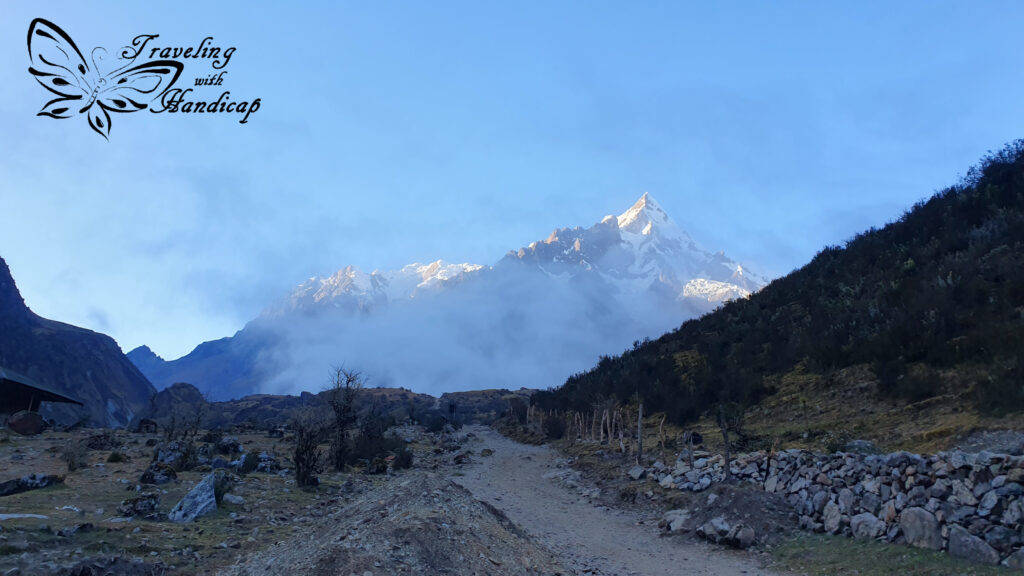
Day 3: Wayraqmachai → Chaullay → Colcapampa → La Playa (24 km)
While the tours walk until Chaullay within their second day (22 km total), I passed this little village on my third day for lunch. Actually, I bought water in Chaullay and lunch in Colcapampa. Moreover, tours walk from Chaullay to Santa Teresa on day 3, I walked from Wayraqmachai to La Playa. This was a very long distance, since the Abra Salkantay all downhill.
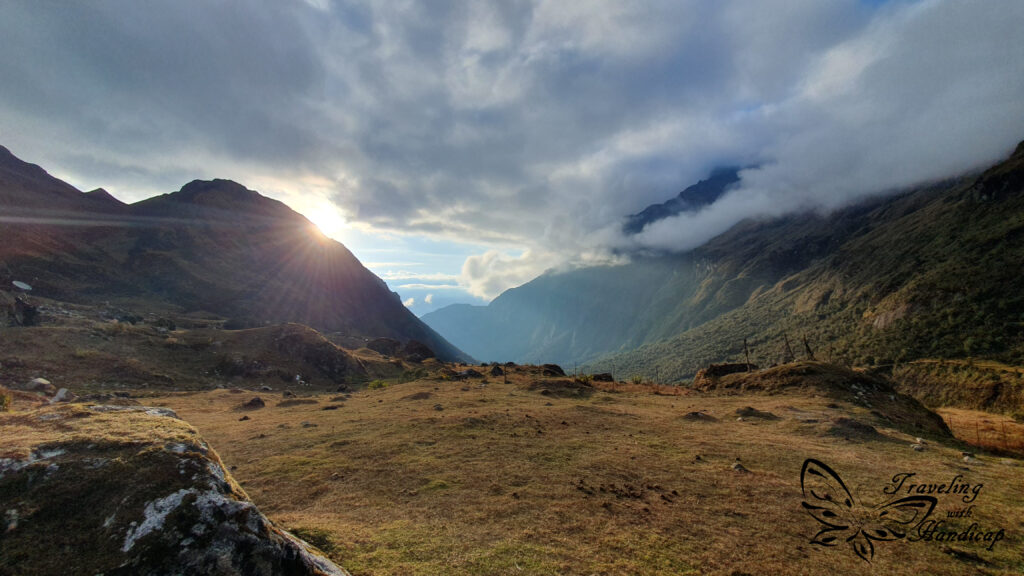

I’m happy I didn’t rush through Wayraqmachai to Chaullay because within this part, the landscape truly changes. From high altitude dry and rocky to palm trees and humid. Quite impressive. I didn’t rush on this part even though I could have walked faster since there wasn’t as much loose gravel anymore.
After two nice short breaks for water, charging my phone and lunch, I continued to La Playa. I have to admit that I cheated in this part. I did not walk the official Salkantay trek but the parallel road. Actually, the guy I bought water from recommended this referring to my backpack. And I was happy he did. After Colcapampa, the trek gets tiny for quite some distance, no space to overtake someone or even get your backpack off for a break without having anything falling down some meters. Since there were almost no cars on the road, this wasn’t any problem.

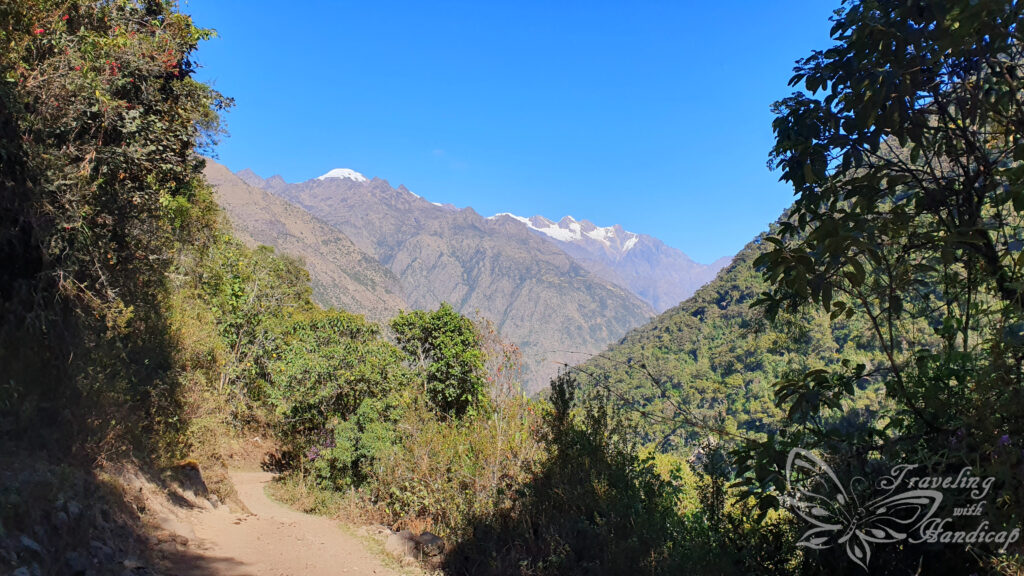
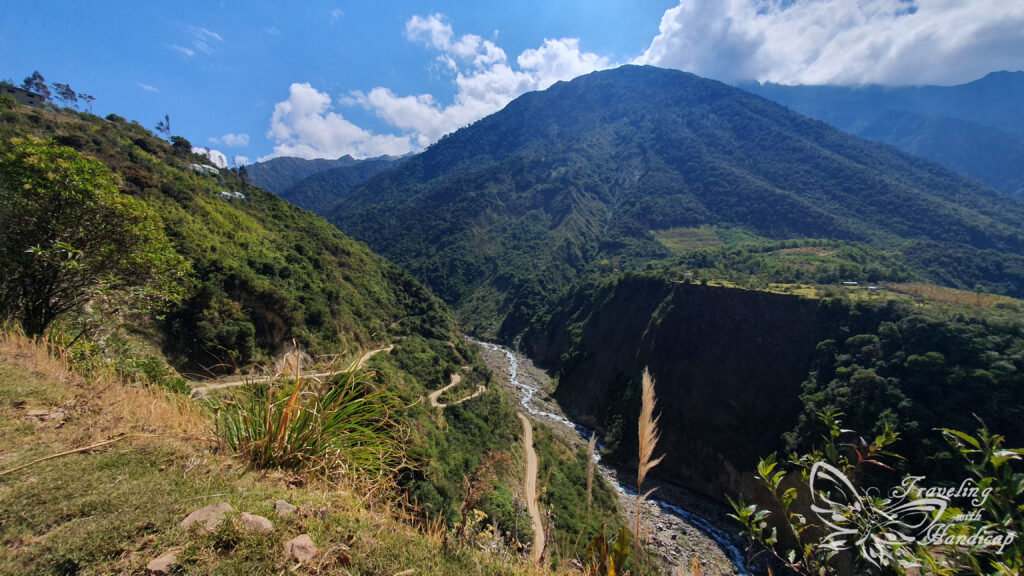
Day 4: La Playa → Santa Teresa ↔ Aquas Termales Colcamayo (Tuk Tuk) → Hidroeléctrica (colectivo) → Intihuatana (12 km)
In La Playa I had dinner at one restaurant and asked for a good and free camping area. The owner offered me to camp in her garden since I paid for the dinner and if I will also buy some breakfast. This was a good deal since it was a nice restaurant with an outdoor-accessible bathroom. After some breakfast, I walked towards Santa Teresa. I have asked many people what the actual Salkantay trek is, from La Playa towards Santa Teresa or from the Lucmabamba Lodge crossing the Llactapata towards Hidroeléctrica. I’ve been told it would be to Santa Teresa.

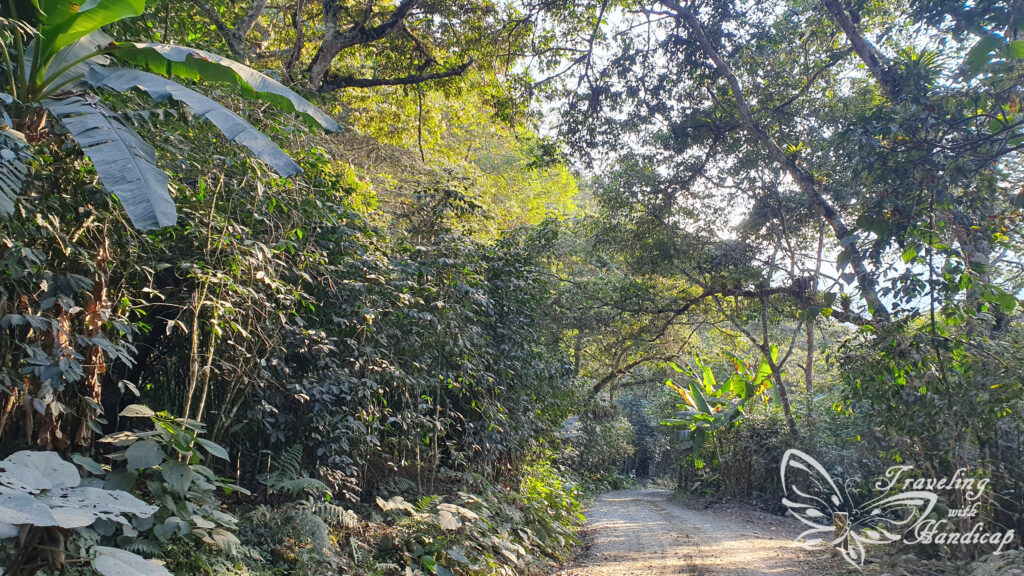
If you cross Llactapata, you have to hike a lot up- and downhill again as you have to cross a mountain. From Llactapapa you should have a first view on Machu Picchu. I decided for the Aguas Termales close to Santa Teresa which you wouldn’t pass using the direct Llactapata route. The walk to Santa Teresa was a road, so there were cars crossing. Not many but more than on the first part from Chaullay. Moreover, there were many mosquitos, so I was happy to have bought a new spray (with enough DEET).
From Santa Teresa I took a tuk tuk to the Aguas Termales because the former walkway doesn’t exist anymore, and the road is not nice at all. Even though the water wasn’t as warm as expected, the landscape was quite impressive, surrounded by huge mountains. After the bath, I went back to Santa Teresa by tuk tuk and used a collectivo to get to the Hidroeléctrica (train station). I could have walked the 10 km to Aguas Calientes before sunset but decided against it. There were so many people around, starting the track, so I decided to camp in Intihuatana, the little village after the train station.

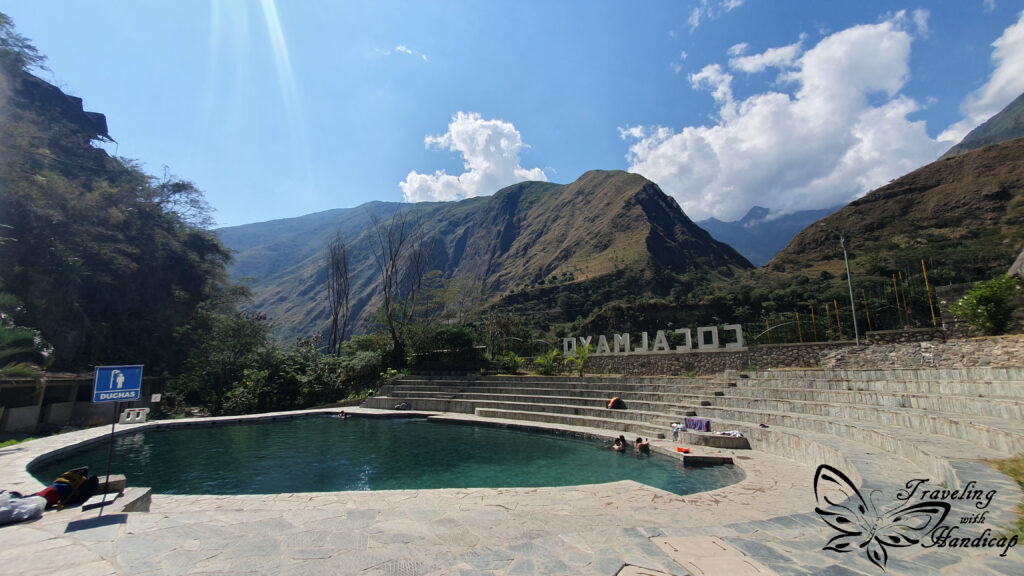
Day 5: Intihuatana → Mandor → Aguas Calientes (10 km)
On my day 5, I got up before sunrise and started walking at sunrise. Like this, I was almost alone. There were only two others having the same idea, walking as slowly as me to take many pictures. So the three of us walked to Mandor in a really slow pace, taking many pictures. This walk from Intihuatana to Aguas Calientes was one of my highlights of the whole track. Actually, walking along the rails passing through (I assume) subtropical landscape while the mountains are to your left and right was really amazing. There are almost no train rides, so no worries regarding train traffic.
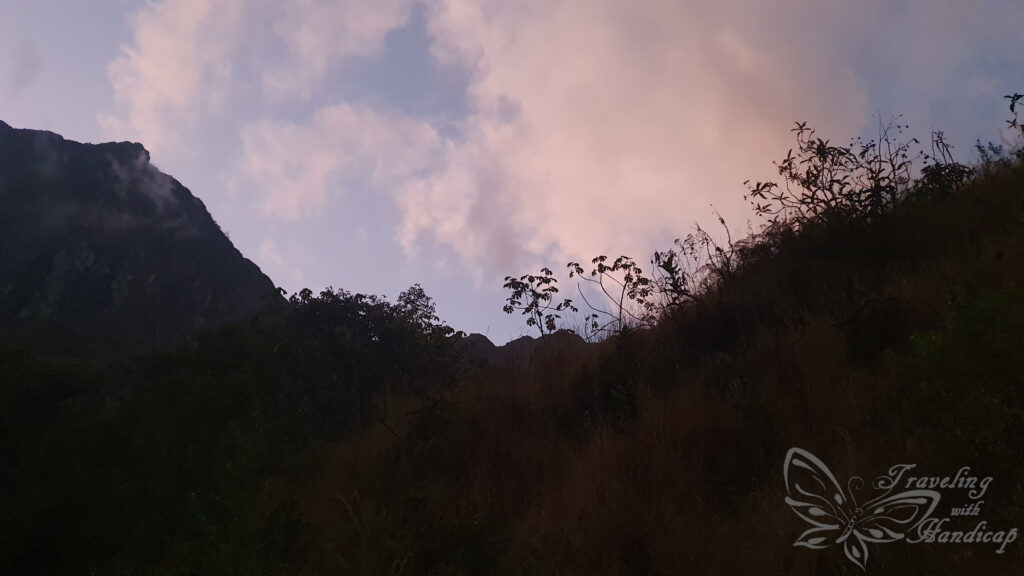
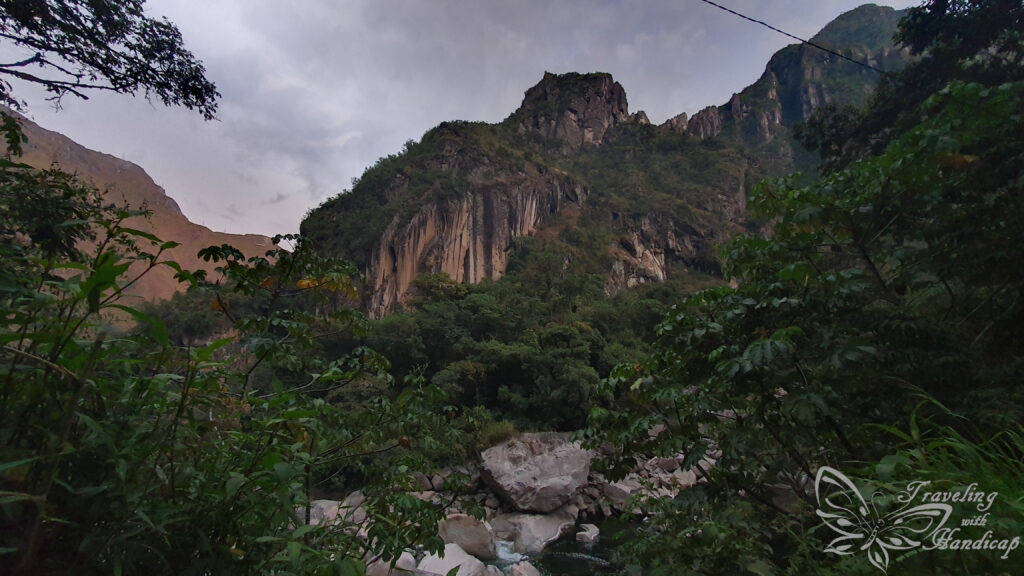
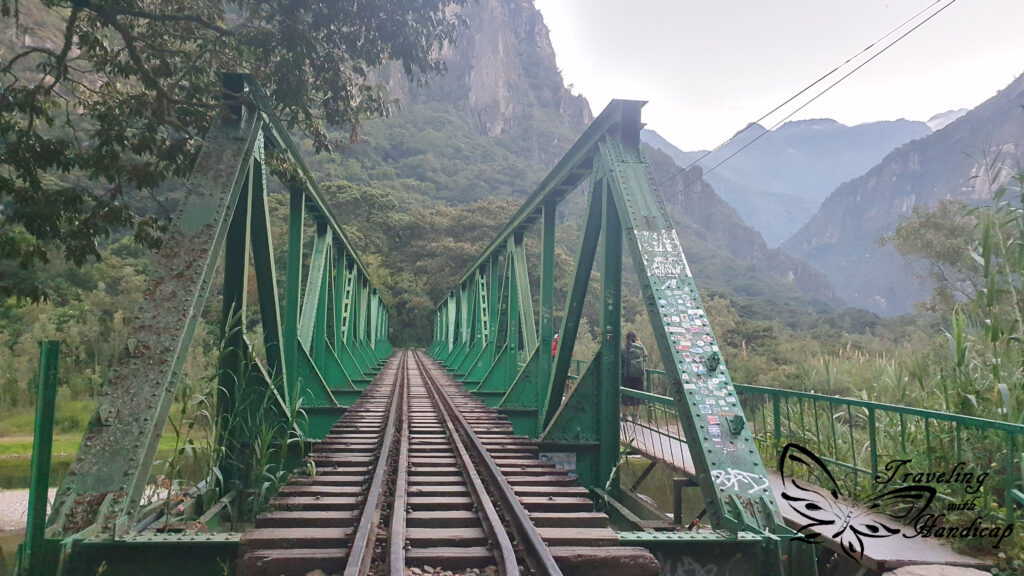
Mandor was a great place for some breakfast, I enjoyed sitting there with some coffee, listening to the birds and other sounds around me. From Mandor, I could have visited botanical gardens and a waterfall for an entrance fee but decided against it. I was happy with the landscape that I experienced during the Salkantay trek and along the rails. Even if you don’t do the Salkantay, these 10 km are so beautiful and not difficult at all, I highly recommend to at least walk this once. Moreover, you can grasp a view of Machu Picchu occasionally (just from the bottom).
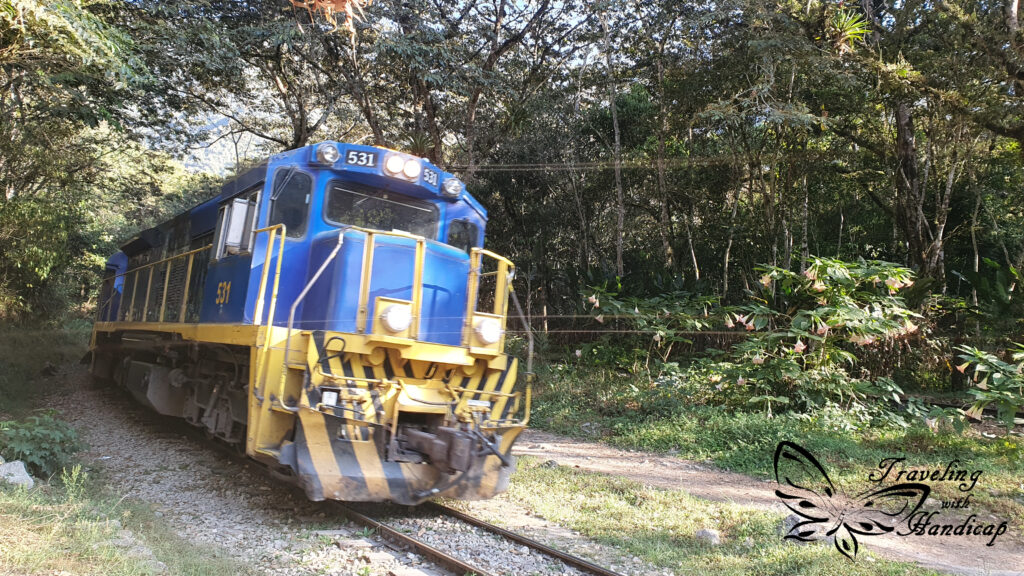
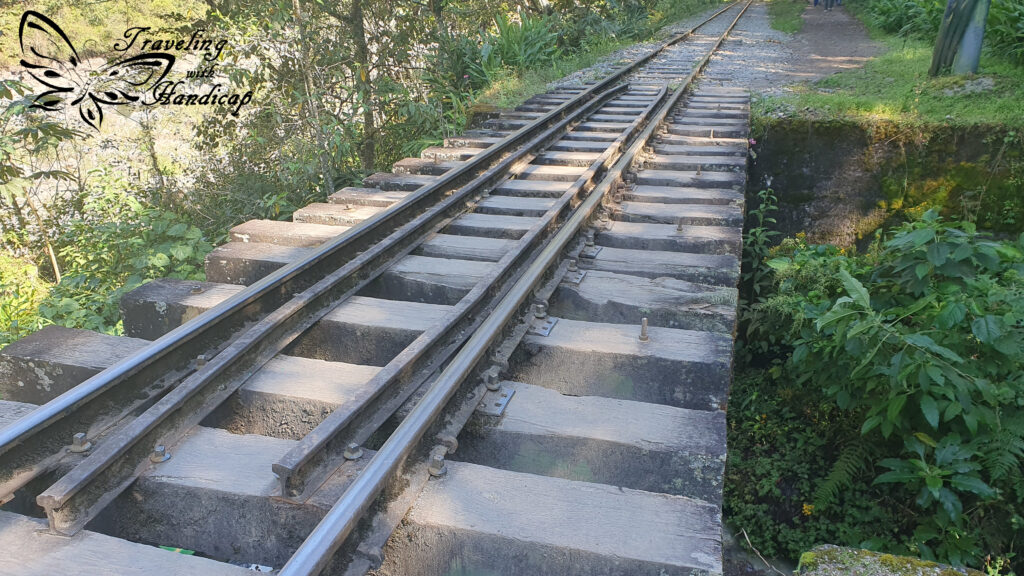
From Mandor I walked to Aguas Calientes where I stayed in a Hostal. There are no camping options in Aguas Calientes and after 4 nights in my tent I appreciated a bed and moreover an indoor shower with a few minutes of hot water. I could have visited Machu Picchu on the same day as they still sold tickets for the afternoon. However, I decided for the next day and just walked around in Aguas Calientes.


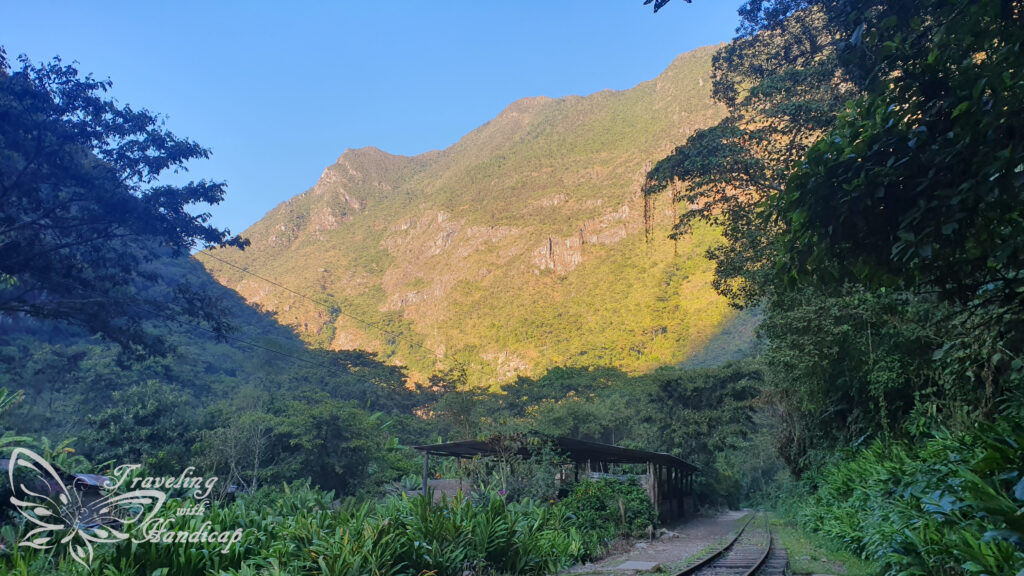


What to consider
On the walk, I realized that there are some tours of horse-riding from Soraypampa to Abra Salkantay and back – which I didn’t appreciate. Honestly, all these horses really annoyed me. Firstly – and this is my personal opinion – if you truly want to say that you hiked something, you should be able to carry everything you need yourself. So no need for transportation horses. Secondly, if there are horses, they should be trained to listen to their owner and not just walk around. It was quite stressful to always shout at the horses to make them keeping some distance.
You can do the track without a guide and without camping. There are enough accommodation options along the track. Currently, there were not many tourists, so you could have easily walked in and asked for a bed. I met some people hiking this way. Like this, you don’t have to carry much which goes beyond a day pack, just some clothes to change and bathroom stuff. If you want to be sure regarding accommodation, you may as well contact your desired places before you start. While it seems comfortable to have “everything included” in a guided tour, it’s much cheaper if you do it on your own, even when staying in hostels/ lodges and buying your own food.
Visiting Machu Picchu
Aguas Calientes
If you want to visit Machu Picchu, you have to spend some time (usually 1 night minimum) in Aguas Calientes. This town feels very touristy with plenty of restaurants and souvenir shops. There is no road to town, you may either take the train or walk. Even though the Peruvian rates for the train are cheaper, I assume that many people decide to walk to Hidroeléctrica and take collectivos to Santa Teresa from there. Since some people need to run all these hotels, restaurants and shops, there are quite some families actually living in Aguas Calientes (close to the football field).
Actually, I appreciated staying in a town without any cars. There was only one little road at the beginning of town where the buses to Machu Picchu stop. I assume the buses have been brought in by train as there is no other “emergency road” to take. Moreover, every maintenance has to be performed within Aguas Calientes and without any big construction vehicles -as there is no road for them. I appreciated seeing kids playing around in any streets, also in the Plaza de Armas, without their parents being worried. They can’t be hit by a car or anything.
There is quite some artwork spread across Aguas Calientes which is nice. There are also thermal baths at the end of town (uphill). However, since I went to the baths of Colcamayo, I didn’t visit these thermal baths as they were more expensive than Colcamayo. Considering the many restaurants, the further away from the Plaza de Armas and the railways, the cheaper they get. Closer to the thermal baths, there are many little restaurants where you get good meals of the day for little money. This is most likely where the inhabitants of Aguas Calientes would go.


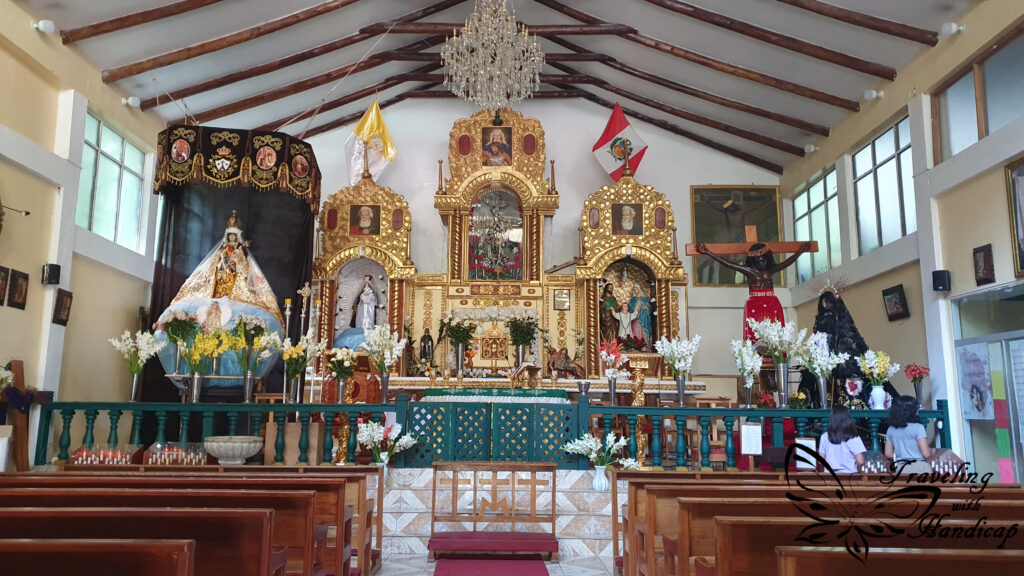


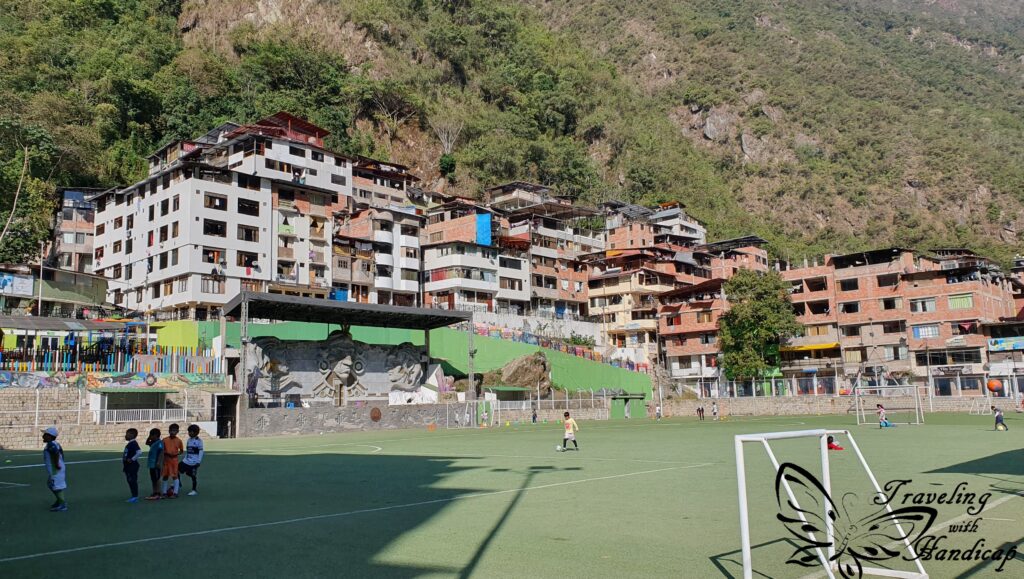


The tickets and tracks
In Cusco, many guides and tour providers will ask you if you have already booked your tickets for Machu Picchu. This is because there is only a limited number of tourists allowed per day. Well, I am not sure regarding high season in years without any political protests, but when I visited, there was no need to make early reservations. Actually, the online booking system seems to be misleading. It says that you can only do specific tracks. If track 1 and 2 are already booked out, you may only do 3 or 4. However, when I bought my ticket in Aguas Calientes, it was no problem at all to pick any track and my ticket stated I could walk track 1, 2 or 3.
I am not sure whether the ticket office in Aguas Calientes operates all year round. I knew about this by asking people who visited Machu Picchu self-organized. From 2 pm onwards, you could buy tickets for the next day. You have to bring your passport as the tickets are personal, and they only let you enter by checking your passport. I was really lucky regarding the fares. With my disability card, I got both the entrance to Machu Picchu and the return bus from Aguas Calientes up the mountain for the Peruvian instead of the foreigners rate (a bit more than 50% of the price).
Machu Picchu
To be very honest, visiting Machu Picchu is a must, but I expected it to be more spectacular. Sure, such a city on the top of a mountain and all that remains until our days is impressive. However, the online presence of pictures are a bit misleading, it looks much bigger than it actually is. I took the longest route (number 2) without any extra-paid side trips which took me approximately 2 hours. Of course including many photo stops.
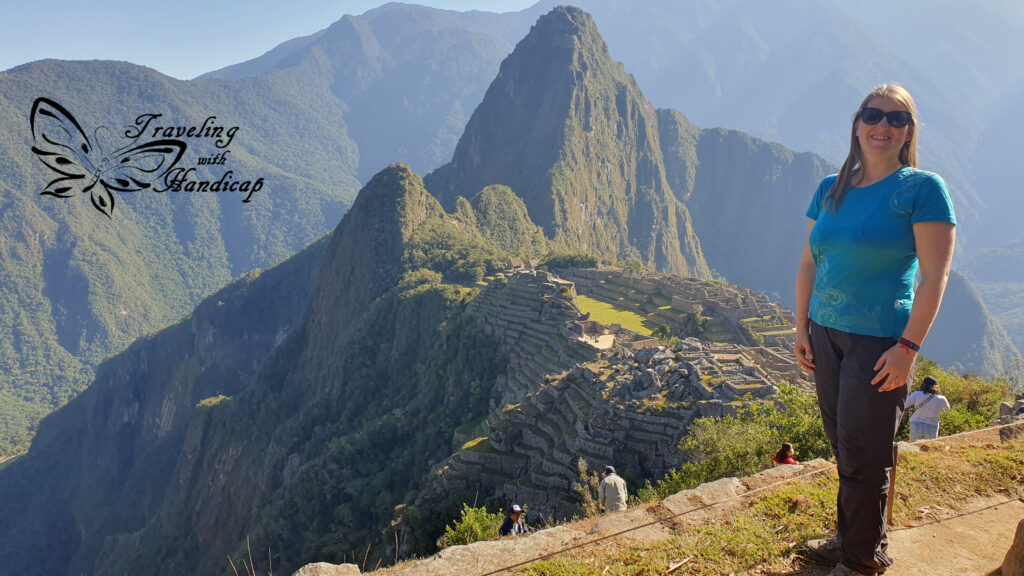
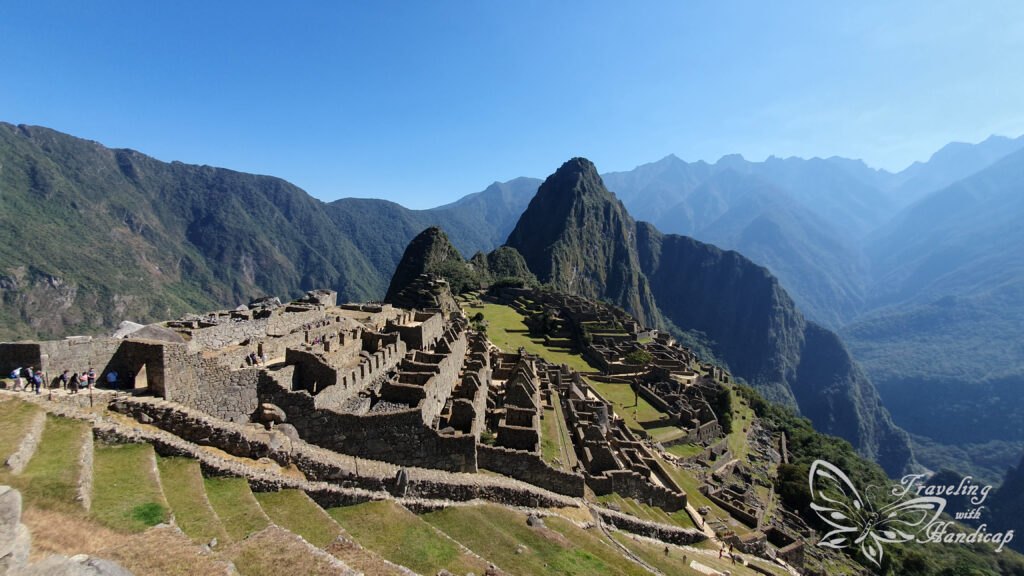
I walked really slowly in order to not miss out on anything possible. This is because there are plenty of security guys walking around who don’t let you return to somewhere. They are super strict regarding “only walking one way” (which was quite annoying, honestly, as they were very rude). Some years ago, this wasn’t a big deal, you could even re-enter with your ticket during the same day.

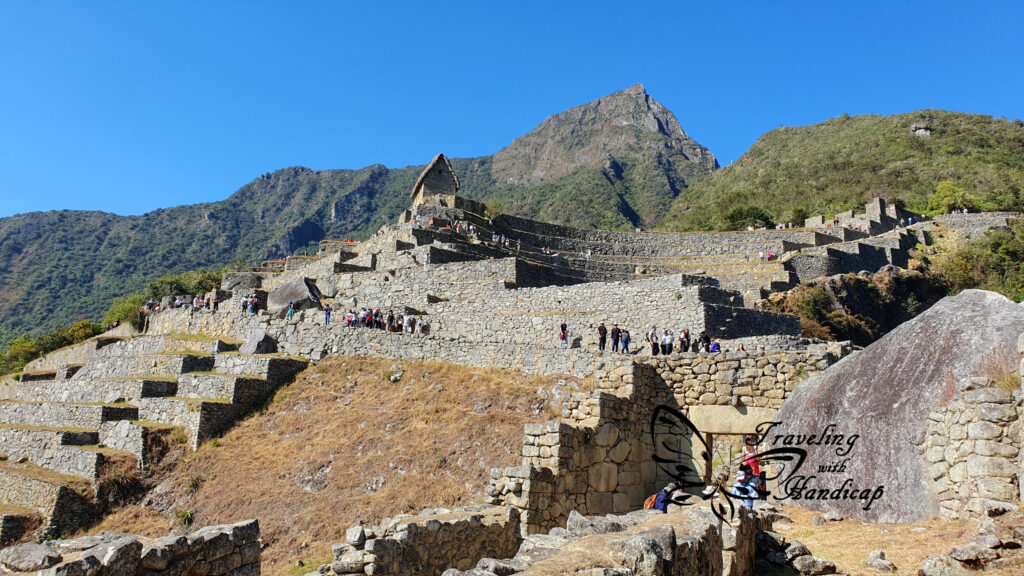

Both in Aguas Calientes and before the entrance of Machu Picchu, many guides run around offering their service. However, if you understand some English and Spanish, you don’t need a guide. It is sufficient to walk around slowly and listen to the plenty of guides explaining to other groups. This way, you will be able to still hear a lot but walk in your own pace (and take your time for photos).

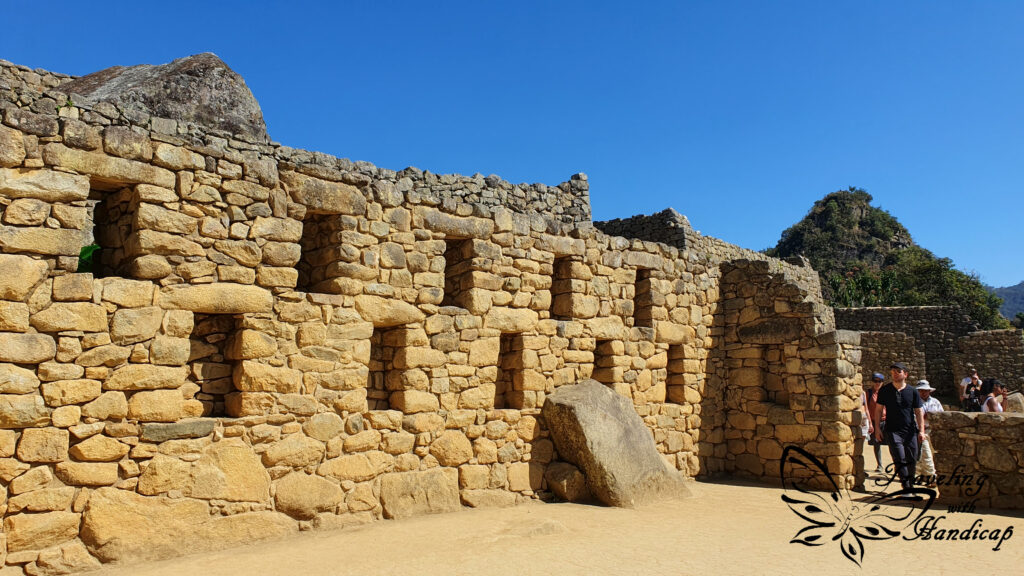
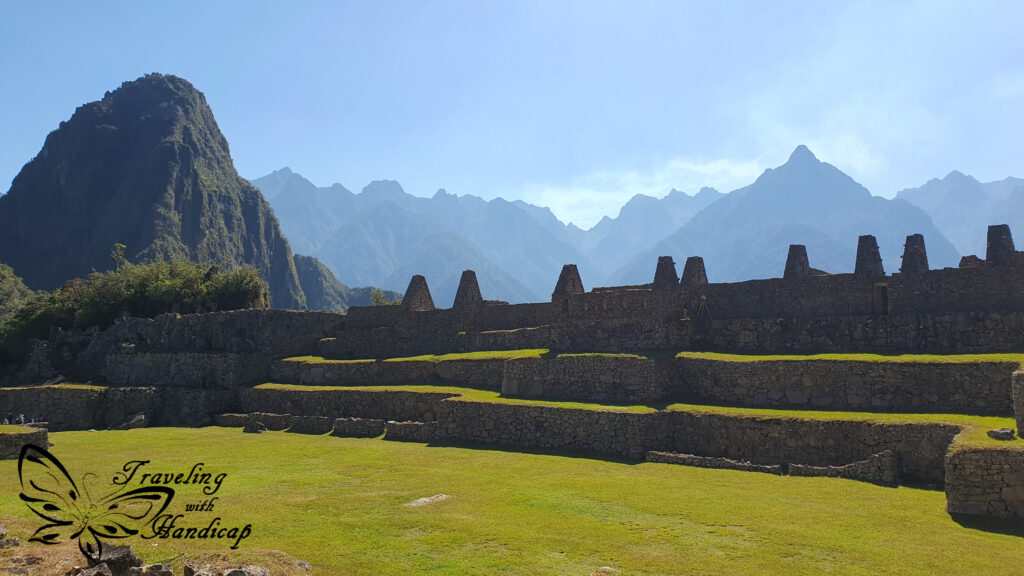
Leaving Aguas Calientes back to Cusco
In order to get back to Cusco, I didn’t take the expensive train but walked back the 10 km to the Hidroeléctrica train station. From there I took a minibus to Cusco. When I walked the opposite way, towards Aguas Calientes, I recognized a sign pointing out to minibuses leaving to Cusco at 2 and 3 pm. As such, I wanted to take the bus at 2pm.
I left Aguas Calientes early, had breakfast at Mandor and had lunch in Intihuatana. There, I bought my bus ticket for 2 pm. We left at 2.30 pm and the bus ride took much longer than expected. This was because there was no proper straight road, we had to cross mountains not through tunnels but by driving over them. As such I arrived in Cusco later than 8 pm. We even had a dinner break along the way which was also a break of all the curves.
